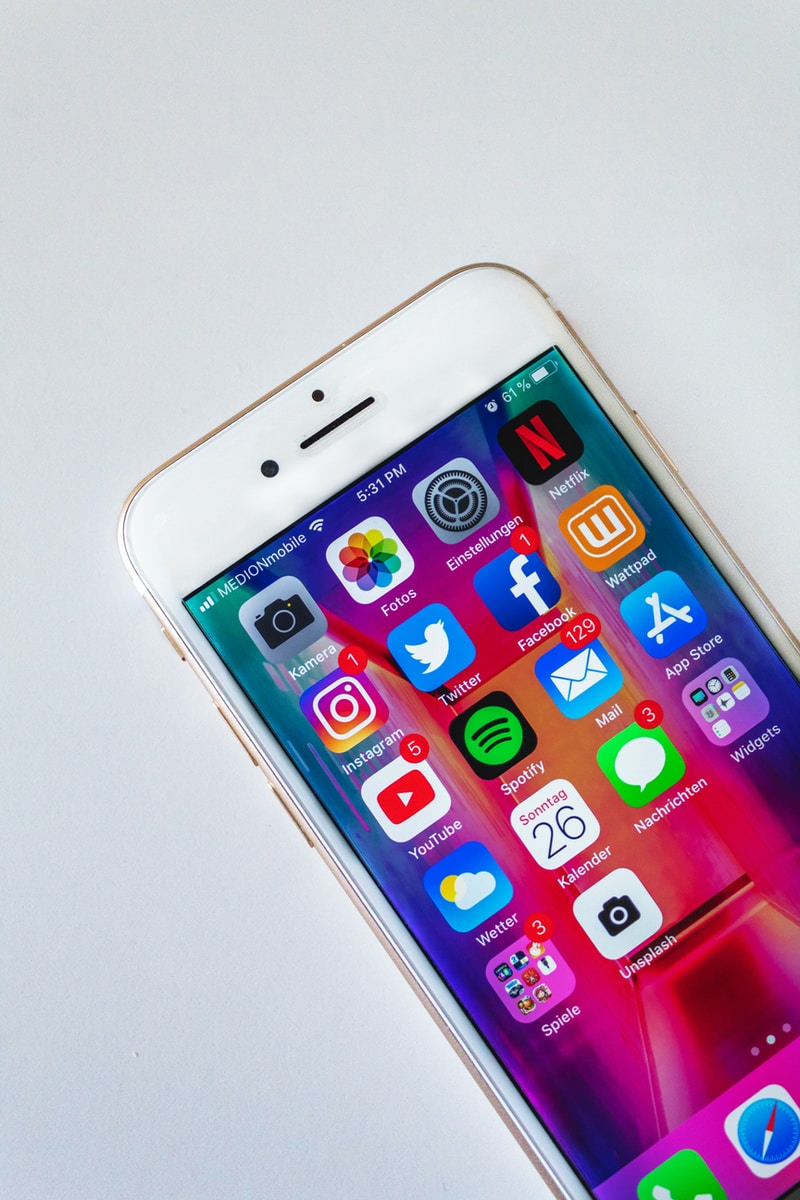For something that’s such an ever-present part of our lives, it’s pretty hard to pin down.
One minute, you think you’ve got it — Instagram is where you go for food photos, and Facebook is where you go to argue with your racist Aunt in Peoria, right? — suddenly things change again, and you’re left wondering why so few people are seeing your work. And that’s not even touching on the new apps, websites, and message boards popping up daily, swearing they’re going to “be the next Facebook” or “put Instagram out of business.” It’s maddening.
If you run a business, you don’t really have the choice to ignore any of it, either. Like, sure, you can get away with not having it in some cases, but for most, it’s necessary. The internet is how people get their news, how they make friends, and how they ingest cat memes; with a whopping 4.8 billion people using social every day, there’s no arguing that your signal is boosted significantly when you’re on there in some capacity.
I’ve been doing this a long time, and I can tell you right now that, while I get the confusion, I see some business owners making the same mistakes over and over again. So let’s get some of these myths out of the way right now, shall we?
We shall. And we’re going to start with:
Myth 1: I need as many social accounts as possible.

I mean…KFC has a Facebook, right? Clearly you need one. And a Twitter. And an Instagram. And a…
For the love of all that is holy, put the mouse down. You’re going to hurt yourself.
It happens super gradually, doesn’t it? You start with a Facebook. Then Facebook suggests an Instagram. The next thing you know you’re lunging at a lady in the grocery store asking her if she’s interested in following you on one of your 17 different platforms, even though you really wish people would stop following you because you feel like you’re spending all of your day trying to think of what to post next. You’ve overextended yourself and you don’t know how to fix it.
To be fair, this is an easy mistake to make, and I’ve made it myself. If you go to my website, you’ll still see that I have quite a few ways for you to keep up with me. On paper, this sounds nifty, but in all honesty, it’s one of my dumbest and hardest-to-rectify missteps, despite me already knowing better.
The truth is, instead of showing up everywhere, you need to have a few profiles for your brand that you produce good content for regularly. I generally suggest no more than three accounts that you actively access and add to on a consistent basis; any more, and you’re going to wind up crying and throwing your computer.
If you’re still side-eyeing me, look at it this way: every social media platform is designed to reward you with greater reach and more followers, only if you show up often and stay for a while. In order to grow your accounts well and to produce for each of them the way you truly need, you’re either going to be spending hours producing content, tons of money on scheduling software, or both.
So…pick 2–3 platforms, produce for those, and really make them yours. The rest will fall into place.
Myth 2: I just need to post good content and the followers will come.

You know why social media is so-named? It’s because the companies behind it want you to use their platform as your chosen method for reaching out to others. If you’re just posting, disappearing, and never talking to people, you’re doing it wrong. It’s not called “Talking AT People and Running Away” media for a reason.
Shares, followers, comments, and likes are a huge part of this, yes, but part of it is also about making friends by doing the same for others. Some of my best growth has come from shares by much larger brands, and I’ve paid that forward to brands that were smaller than mine. Doing this has built a pretty tight-knit community of friends who help — and who I help — when needed. You CANNOT do this without support from others. It’s that simple.
And engage with your commenters. You don’t have to spend a long time doing it, and you don’t have to respond to everyone, but you need to carry on the conversation for a little, otherwise your audience will be less engaged over time.
Myth 3: My job can’t rely on social media because social media is shallow and evil

People can be mean. Sometimes, it’s because they’re just having a bad day, and sometimes it’s because they’re just mean people. Social media, unfortunately, can give these people a signal boost. And, because we suck at understanding that things aren’t a black-and-white issue, there’s a negative connotation that’s lent sometimes to the idea of even the mention of social media.
When Facebook servers went down earlier this year? You saw two types of people: the ones who worked in social who were mad that they couldn’t work, and people responding to those workers with derisive, sneering comments like “if your job relies on social media, maybe get a real one.”
And this attitude runs deep. I can’t tell you how many people tell me they’re uncomfortable showing themselves on their business pages, or plugging their social media because they’re certain that, not only will no one care, but they’ll also receive judgement from those who subscribe to the whole “social media = shallow, mindless and not to be taken seriously” mindset.
My response to this is simple: even if you ran a brick and mortar business, people would wander in, sneer at what you had to offer, and make comments about how your business sucks. Nasty people are everywhere, and they’re the unfortunate part of offering any business or service. In the end, though, you have to work past your fear of the Nasty Ones out there; you don’t want to wind up missing your ideal clients because of some jerk who’s whining at you because they burned their solo TV dinner and didn’t bother to learn to handle their emotions.
And one more thing: anyone who judges you for using your social to its fullest had to be using social media in the first place to find out about it, so they can shut it.
Four-point-eight BILLION, my friends. Don’t let the naysayers fool you.
That said…next we’ve got:
Myth 4: All I need is social media

Look, if it were that simple, that would be magical. And, in fact, in some countries you really do only have a Facebook page to glean info from (my country, Costa Rica, for example), but the truth is nothing will take the place of a well-laid-out, informational website. Even if your brand is mainly online, you need this.
Websites are like your storefront in a very busy shopping center. It’s where people are likely to stumble in to take a look around. Your social media profiles are meant to be a mixture of your merchandise displays and your customers’ look at the personality behind the brand. How weird would it look if you walked past a store that was just a shelf or two, with no front whatsoever?
Exactly. Don’t do this. You’ll be doing yourself a disservice.
Also, I won’t get too much into this, but your website is where you’ll house your newsletter. If you don’t have a newsletter, write one. It can be once a month or once a quarter if you want, but you need to have one place where your fans can find you in the event that social should ever go kablooey again. You don’t want to lose all those eyes in one fell swoop.
And finally, I present to you:
Myth 5: I only have 1000 or 5000 or 500 followers, so I don’t need to post much.

Despite how hard they’ll spit this at you, social media is not a numbers game; at least, not in the way people seem to think it is.
People will tell me often that “I only have x followers,” and it makes me itchy.
Your business itself can be measured in sales. It can be measured in profit. If it’s in-person, it can be measured in foot traffic. Social doesn’t work this way.
Your social media success should, instead, be measured in engagement and loyalty. It does you absolutely no good to have hundreds of thousands of followers if those hundreds of thousands aren’t showing up to interact with your or to support your business. I mean…I guess you’ve just made hundreds of thousands of friends, but you like to eat right? And I bet you’re really picky and need money to buy that food? Welp…thereya go.
Instead, focus on whether or not you’re growing a community around your brand. And don’t get upset if engagement doesn’t equal 100% of your following; that just doesn’t happen. For example, Kim Kardashian, who boasts 267 million followers, boasts an engagement rate of 2.24%. That means that on average, only five million of those followers interact with her on a regular basis. Nike, a company with less than that at 184 million, only has a rate of .27% , equal to about 500,000 regular interactions. The bigger the numbers, the lower the engagement rate, so if you’re at “only” 500 followers but 100 of those followers are regularly interacting with you, you’re literally doing better than Kim Kardashian.
Hold on to those people, speak to them at your best (and worst, if you want), and you’ll welcome in the people you’re looking for, who have also been looking for you.
If you’re looking to get a good social media strategy going for 2022, I’ve opened my books for 2022. Go here to find out more, and schedule an initial consultation.

